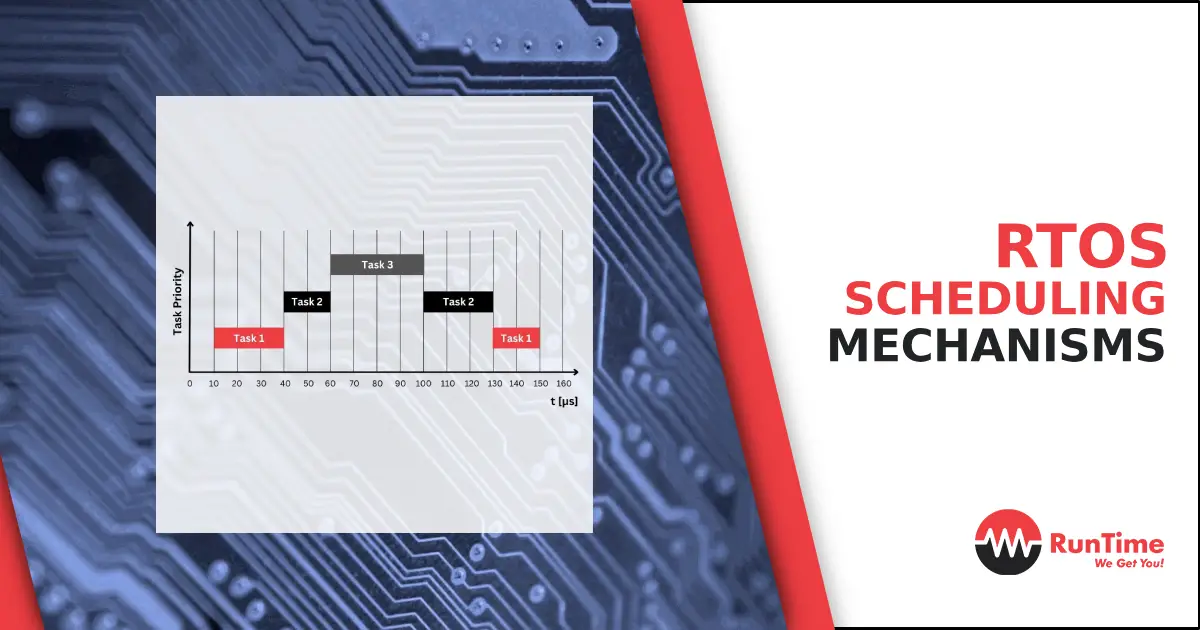Scheduling mechanisms play a pivotal role in orchestrating the execution of tasks with precision and efficiency. Whether it’s guiding the operations of an automotive control system, managing life-critical healthcare devices, or controlling aerospace applications, understanding RTOS scheduling mechanisms is paramount. In this article, we will delve into the key aspects that make RTOS scheduling mechanisms so crucial, shedding light on their significance, various approaches, and real-world applications.
1. Precise Timing
One of the defining attributes of RTOS scheduling mechanisms is their ability to provide precise timing for tasks. In a real-time system, meeting strict deadlines is non-negotiable. Whether it’s delivering life-critical medical data or ensuring that a vehicle’s airbag deploys at the right moment, timing precision is paramount. RTOS scheduling mechanisms excel in this regard, ensuring that tasks are executed within specified time constraints. This deterministic timing not only maintains system integrity but also enhances the overall reliability and safety of real-time systems.
2. Preemptive vs Cooperative Scheduling
Understanding the fundamental dichotomy between preemptive and cooperative scheduling is key to optimizing system performance. Preemptive scheduling allows higher-priority tasks to interrupt lower-priority ones, ensuring that critical tasks receive immediate attention. In contrast, cooperative scheduling relies on tasks voluntarily yielding control, which can be suitable for less time-sensitive applications.
The choice between these two approaches depends on the system’s requirements and the criticality of the tasks involved. For systems where responsiveness is paramount, preemptive scheduling is often preferred, while cooperative scheduling might be suitable for scenarios where tasks can work together without frequent interruptions.
3. Priority-based Scheduling
Priority-based scheduling is a cornerstone of RTOS scheduling mechanisms. By assigning priorities to tasks, the system ensures that the most critical processes are executed first. This approach guarantees that high-priority tasks are never left waiting for low-priority ones to complete, maintaining the system’s responsiveness and real-time capabilities.
Prioritizing tasks based on their importance allows real-time systems to efficiently allocate resources and process data, making it a fundamental concept in the design and operation of RTOSs.
4. Round-Robin Scheduling
Round-Robin scheduling is a well-known algorithm used in RTOS scheduling mechanisms. It cyclically assigns time slices to tasks in a circular fashion, promoting fairness among tasks. This mechanism ensures that no task hogs the CPU for an extended period, preventing resource starvation.
While not always suitable for hard real-time systems, it strikes a balance between fairness and responsiveness, making it a valuable tool in various real-time applications.
5. Rate Monotonic Scheduling
Rate Monotonic Scheduling is another critical scheduling algorithm within the RTOS domain. This approach prioritizes tasks based on their periods. Tasks with shorter periods are given higher priority, ensuring that critical tasks are handled promptly.
Rate Monotonic Scheduling is particularly useful in systems where certain tasks must be executed frequently, such as sensor data processing in automotive applications or control loops in industrial systems. By giving high priority to these time-critical tasks, RTOS scheduling mechanisms ensure that they are never delayed.
6. Resource Locking and Deadlocks
Managing shared resources and avoiding potential deadlocks is paramount. Deadlocks occur when multiple tasks compete for resources and become stuck in a state of mutual waiting, leading to system instability.
Understanding how to handle resource locking, using techniques such as semaphores and mutexes, is essential for maintaining system stability. RTOS designers and developers must be adept at managing these critical aspects to ensure that real-time systems continue to function without interruptions or failures.
7. Task States
RTOS scheduling mechanisms involve understanding the different states a task can be in. Tasks may be in a running state, actively executing code, or in a ready state, waiting for their turn to execute.
There is also the waiting state, where tasks pause to wait for external events or resources. Transitions between these states are managed by the scheduler, which ensures that tasks move smoothly between these states to maintain system operation and meet deadlines.
8. Real-world Applications
RTOS scheduling mechanisms are not just theoretical constructs; they are integral to a multitude of real-world applications. From the automotive industry, where they control the safety-critical functions of vehicles, to aerospace applications, where they guide the operation of spacecraft, and in healthcare devices where they manage the delivery of vital treatments, RTOS scheduling mechanisms underpin the functionality and reliability of countless systems.
The real-world implications of RTOS scheduling mechanisms cannot be overstated, as they enable us to trust and rely on the systems that affect our daily lives.
Related Article: Custom RTOS vs Commercial RTOS vs Open Source RTOS
Conclusion
RTOS scheduling mechanisms are the invisible orchestrators behind the reliability and precision of numerous real-time systems. They are essential for ensuring that tasks are executed within specified time constraints, promoting fairness among tasks, and handling resource management effectively. Understanding the nuances of RTOS scheduling mechanisms is crucial for engineers and developers working in industries where system reliability and precision are non-negotiable.
Hire the Best Engineers with RunTime Recruitment
Our expert team of engineers-turned-recruiters offers in-depth knowledge of technical recruiting in the engineering industry.
If your company is looking to recruit highly skilled engineers worldwide, contact us today and we will do the sourcing for you. Or if you’re an engineer looking for new opportunities, you can check RunTime Recruitment’s job site for job vacancies.









